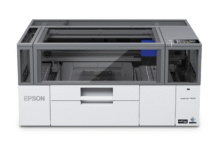
UltraThinPE Tec is a new innovation from Stora Enso that significantly reduces the share of plastic coating in the foodservice Board (FSB) and applications such as single-use paper cups. With the help of UltraThinPE Tec, Stora Enso has developed the thinnest polymer coating for FSB products on the market. This achievement allows for paper cup designs with less than 5% plastic – an important step in helping packaging converters, brand-owners, and retailers meet their plastics reduction targets. The technology is presently used to produce UltraThinPE coatings for Stora Enso’s Cupforma product range for paper cups.
Paperboard material used for producing paper cups requires a barrier, commonly made from plastic, that offers both protection against liquid and functionality in converting. UltraThinPE Tec greatly improves the sustainability of paper cups by yielding the lowest plastic coating weight available on the market and reducing the overall carbon footprint of the finished product.
Stora Enso’s UltraThinPE Tec coatings are recyclable
UltraThinPE Tec reduces plastic coating weight by up to 40% when compared to Cupforma Natura products with 15 gram square meter PE (polyethylene) or renewable PE Green coatings (bio-based polyethylene), therefore enabling a share of greater than 95% paperboard. Achieving a plastic share of less than 5% helps brand-owners meet the composite threshold for packaging in some European countries. As a result, UltraThinPE Tec coatings can significantly reduce extended producer responsibility (EPR) fees by 75% in countries such as Germany.
FSB products with UltraThinPE Tec coatings can be recycled with paper or board depending on local regulations, collection, and sorting infrastructure. As one-sided, minimal-plastic coatings, they can also ease FSB recycling in standard recycling mills when combined with other paper and board packaging.
“By knowing the intended end-use of the product, like paper cups that will hold liquid for a short time, we can design coatings that use the absolute minimum material necessary. We do this by testing and verifying the exact amount needed for the end-user. UltraThinPE Tec enables brand-owners to meet their sustainability targets further, especially concerning plastics reduction, while maintaining the highest product hygiene and safety standards as in the case of paper cups,” said Tuomas Puonti, vice-president, head of Business Line LPB Fresh & FSB.















